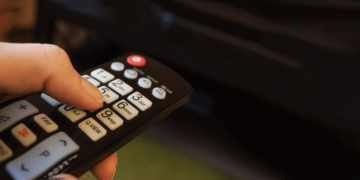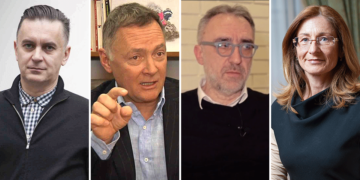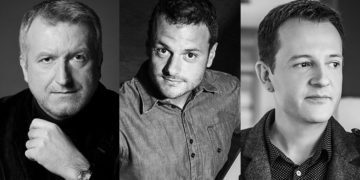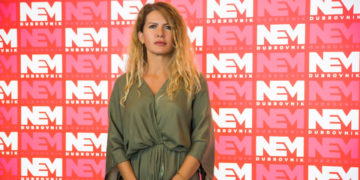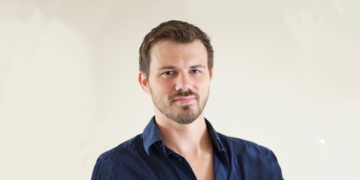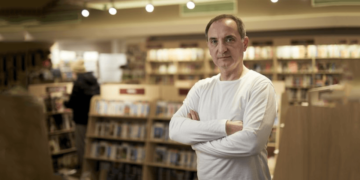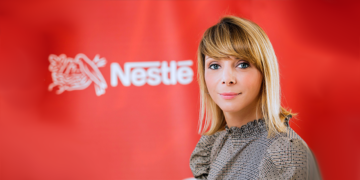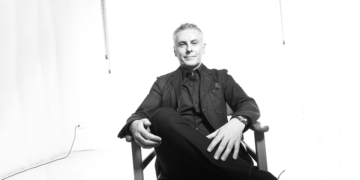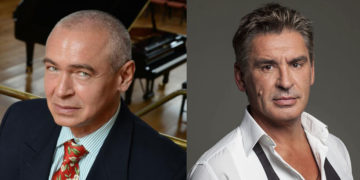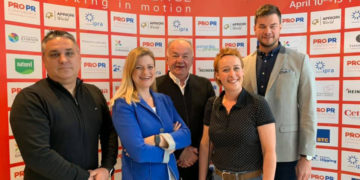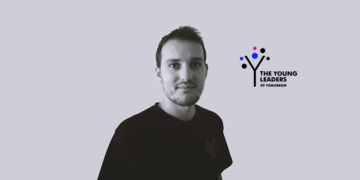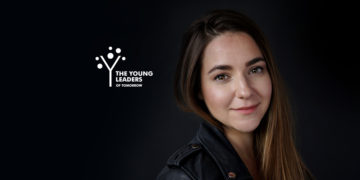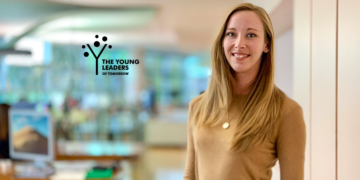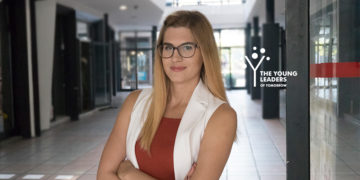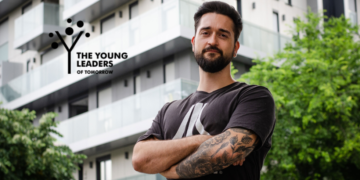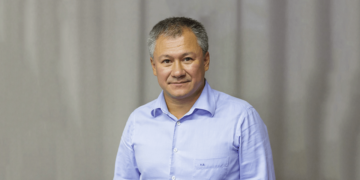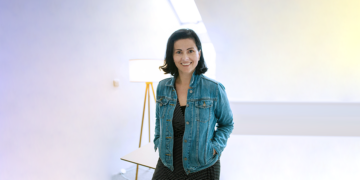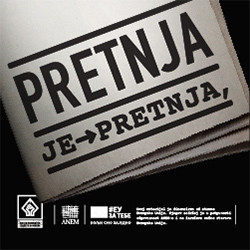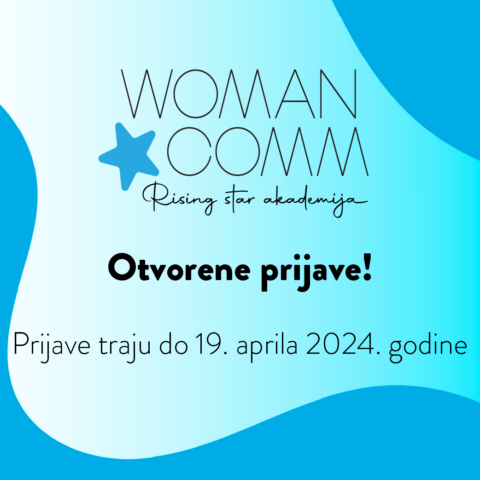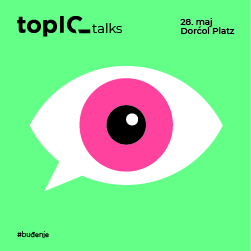Drugi jezik na kojem je dostupan ovaj članak: Bosnian
Photo by: Nebojša Babić
Interviewed by: Ekrem Dupanović
Translated by: Johannah Maurer
In mid-April 2018, the cultural scene in Belgrade welcomed a new cultural space dedicated to showcasing contemporary artistic practice and trends and promoting the creative work of young artists from Serbia and the region, when Novembar, an independent gallery located at Kursulina 22 in Vračar, opened with The gods must be crazy, a show by London-based Serbian artist Ana Milenković, attended by the artistic and cultural cream of Belgrade and Serbian society. The gallery’s founder and owner, Srđan Šaper, is the president of the I&F Group and known for his interest in art, creativity, and innovation more generally, while Maja Kolarić is the director and curator. This impressive cultural space for the presentation, enjoyment, and contemplation of contemporary art was born of Srđan and Maja’s joint vision and has quickly succeeded in drawing in a broader public, including the experts and artists themselves. “There are lots of challenges, but we’re tackling them. Most importantly, we really enjoy the work. It is not easy being an art enthusiast in Serbia, but we are getting stuck in and doubling down,” says Maja.

“The region has never suffered any lack of talented artists or exceptional ideas. We want to help young artists and their work reach the public. As someone who had to fight for my own place in the art world, I know how important support and encouragement that you are on the right path are, and of course a chance to present your work. We want Novembar to be a place where young artists receive that kind of support,” is how Srđan Šaper described Novembar’s mission at the opening some two and a half years ago, a mission the gallery has met and lived very successfully ever since.
And so, Vračar, famous for its restaurants and cafes, became home to a signature cultural space that quickly became a favourite hangout for Belgraders, with between 30 and 50 visitors a day, no mean footfall when considered in monthly or annual terms.
Novembar ended its very successful first year with an exhibition by Selema Selman, a Roma artist working in New York. The exhibition opened on December 10, 2018 and provided an effective expression of the gallery’s concern for the social value and significance of art. Opening on International Human Rights Day it helped promote the artist’s humanitarian activity and supported Selma’s fund-raising for a project to help children in Roma communities with their education and to inspire and encourage them by example.

It’s not exactly easy to create a popular busy new cultural space in Belgrade, a town already saturated with galleries and exhibition spaces. We wanted to find out how Novembar found its place under the sun. What made it stand out from other galleries? Why do people come?
“With the reopening of the Museum of Contemporary Art, the opening of a numberof new galleries, and all the established exhibition spaces, Belgrade has become an extremely dynamic city, with a lot of interesting regular cultural events. Novembar’s exhibition space is large and visible from the street, so that our shows attract attention and invite visitors of all backgrounds to come in and explore. As a contemporary art gallery, we do our best to include significant and interesting modern artists in our programme whose works represent the times we live in. Many of the artists we feature are also well-known to a wider international audience.”
Some of the well-known artists who have shown at Novembar are: Ivan Grubanov, Ivana Bašić, Vuk Vidor, Selena Vicković, Ana Milenković, Selma Selman, Tadija Janičić, Marija Avramović, Radoš Antonijević, Marko Crnobrnja, Marija Šević, Lidija Delić, Ana Adamović, and Emilija Radojičić.
The art is not the only noteworthy thing about the gallery. The space leaves quite an impression on visitors. “The most flattering comment we get about the gallery, from both local and international visitors, is that when you enter the space it is as though, just for a second, you lose sight of where you really are, that you could be anywhere, New York, London, Paris, or Belgrade. One of the beautiful things about art is how it can imbue a city with global spirit, because art speaks a universal language that anyone can understand. In our quest to connect the local with the global, we have been searching for, working with, and, above all else, promoting young local artists who live and work abroad, where they have achieved significant results and built up solid careers.”
Many of these artists have no contacts with the local scene or knowledge of how to approach it. Novembar has positioned itself as their point of contact or link with the local audience, whether it’s the experts or the wider public, collectors, and art lovers. Of course, the gallery’s team of curators does not neglect artists who live and work in Serbia either. They are always looking for new local artists and ways to enhance their work and profile.
As well as shows, Novembar is also involved in publishing, research, and educational programmes that promote creativity and understanding of the language of contemporary art among adults and children. The gallery hosts talks with artists. About a month before the pandemic, they held their Family Days, professionally staged talks and workshops for children aged 3 to 11 and their parents, that involved viewing the show, talking about the art and the pieces on display, and then creating together in interactive workshops. The gallery’s goal is to encourage the children’s creativity and curiosity as well as to foster their cultural growth.

When asked what forms of fine art are Novembar’s core focus as a gallery, Maja points out that contemporary art involves a vast range of media, from the traditional ones of painting, sculpture and graphic design, to mixed or multimedia works and an increasing use of science and technology. “We are not focused so much on a specific medium as on the work itself, on its artistic qualities. Our goal, through different artistic media, disciplines, and contexts, is to become a vital platform for critical reflection, with a view to making a fresh contribution to developing new knowledge and opportunities for learning that will bring something useful to the profession, the public, and collectors, as well as to our employees and investors,” is Maja Kolarić’s response when asked about which artistic medium the gallery focuses on. For Maja, art is more a part of her life than a job, and that, she says, is the best thing about her job. The artists that the gallery works with become friends, “… a part of our family. Of course, there is the formal part to the relationship, based around the artists’ and the gallery’s obligations to each other. But the relationship transcends the contractual and is grouned in deep respect, love, mutual trust, care, and support.”
When choosing who to work with, the gallery tries to select artists who speak to the current social climate as well as portraying interesting themes in their art. “There are many interesting artists, but art which tests boundaries, that speaks from and to the heart, is, in my opinion, art you can’t ignore. That’s the kind of art that interests and inspires us. We try to make sure that the art we display in our gallery meets high artistic standards, but, as a privately-owned commercial gallery, it is also important that we keep a balance in terms of the price and quality of the work we show and that the price is competitive compared to bigger markets outside of Serbia. We strive for professionalism in what we do, starting with this beautiful space which is meant to be filled with art. It meets all the criteria of proper gallery space. But it is our attitude, how we approach the artists, that captures their attention, because they are our priority,” says Maja. Not that Novembar ignores the financial aspects of cultural life either: “What got us involved in the first place was the realisation that we shouldn’t think of art as just a socially valuable activity but as something with financial value too. That is often overlooked. We hope to show the public that aspect of art, a legitimate aspect accepted elsewhere in the world.”
A lot of memorable things have happened in the gallery over the past two and a half years. There have been incredible exhibitions, including pieces that would be an incredibly rare sight even in more famous world cities or galleries, significant artists and individuals met,… but if you ask Maja what she has found most important or memorable, she always mentions two things: that the gallery even exists and its opening, which she will always remember. “It can sometimes seem as though art will exist and survive even without a market, but in fact artists rely fundamentally on the economy to live and create. Every society needs independent souls of this sort and a gallery to be their scene and stage. So, on behalf of the artists, we are grateful to Srđan Šaper for the enthusiasm and bravery he has shown in stepping forwards with this challenging venture.”
In September, Novembar will host a solo exhibition by Brankica Žilović Šoven, entitled Polja sećanja/Memory Fields. For the month of November, a solo exhibition is being prepared by Nina Ivanović, prize winner at last October’s Salon/Belgrade Biennale.
In conclusion, we asked Maja if there was an exhibition by any one that she would particularly like to organize but hasn’t had a chance to. “There are loads of artists whose work I greatly admire, love, and respect and it would be an honour to work with, but if I have to single someone out, then it would be Predrag Nešković among local artists and Erwin Wurm among the foreign ones.”

